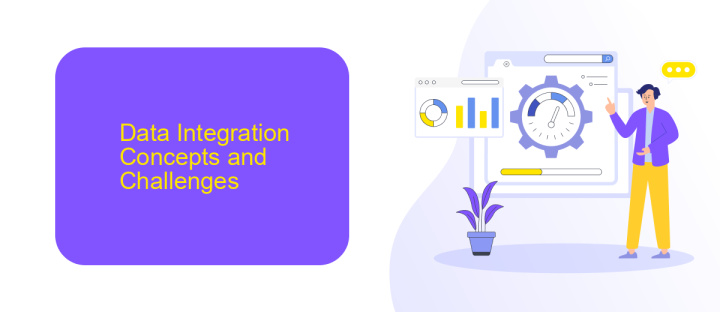Integration of Spatial and Non Spatial Data in GIS
In the rapidly evolving field of Geographic Information Systems (GIS), the integration of spatial and non-spatial data has become increasingly crucial. This synthesis enhances the analytical capabilities of GIS, enabling more comprehensive insights and informed decision-making. By combining geographic coordinates with descriptive attributes, organizations can leverage a richer dataset to address complex spatial problems and optimize resource management.
Introduction
Geographic Information Systems (GIS) have revolutionized the way we analyze and visualize spatial data. The integration of spatial and non-spatial data within GIS platforms enhances the ability to make informed decisions by providing a comprehensive view of the data. This integration is essential for various applications, including urban planning, environmental monitoring, and resource management.
- Improved data accuracy and consistency
- Enhanced decision-making capabilities
- Streamlined workflows and processes
- Increased data accessibility and sharing
Integrating spatial and non-spatial data can be challenging due to differences in data formats and sources. Tools like ApiX-Drive facilitate this integration by automating data transfer between various platforms, ensuring seamless synchronization. This enables users to efficiently manage and analyze diverse datasets, ultimately leading to better insights and outcomes.
Data Integration Concepts and Challenges

Integrating spatial and non-spatial data in GIS involves combining geographic information with various types of datasets to provide a comprehensive view of the analyzed phenomena. This integration allows for more robust and detailed insights, enhancing decision-making processes across multiple domains such as urban planning, environmental monitoring, and resource management. However, the integration process is often fraught with challenges, including data format incompatibilities, varying data accuracy, and temporal discrepancies between datasets.
One effective approach to overcoming these challenges is utilizing specialized integration services like ApiX-Drive. ApiX-Drive offers a user-friendly platform designed to facilitate seamless data integration from multiple sources. By automating the data synchronization process, it ensures that both spatial and non-spatial datasets are consistently updated and compatible. This not only saves time but also minimizes the risk of human error, thereby improving the overall reliability and usability of the integrated GIS data. Leveraging such tools can significantly streamline the integration process, enabling more efficient and accurate data analysis.
Techniques for Spatial and Non-Spatial Data Integration

Integrating spatial and non-spatial data in Geographic Information Systems (GIS) is essential for comprehensive analysis and decision-making. This process involves combining various data types, such as geographic coordinates and tabular data, to provide a more complete understanding of the studied phenomena.
- Data Transformation: Converting data into compatible formats using tools like GDAL or FME.
- Data Linking: Establishing relationships between datasets using common identifiers or spatial joins.
- APIs and Middleware: Utilizing services like ApiX-Drive to automate data integration from different sources.
- Database Management: Storing integrated data in relational databases like PostgreSQL with PostGIS extension.
- Visualization: Using GIS software such as ArcGIS or QGIS to visualize and analyze the integrated data.
Effective integration of spatial and non-spatial data enhances the analytical capabilities of GIS, enabling more informed decision-making. Tools and services like ApiX-Drive facilitate seamless data integration, ensuring that data from various sources can be efficiently combined and utilized.
Applications of Integrated Spatial and Non-Spatial Data

The integration of spatial and non-spatial data in GIS has revolutionized various sectors by providing comprehensive insights and facilitating informed decision-making. This amalgamation allows for a more holistic analysis, combining geographical information with other critical data sets, such as demographics, economic statistics, and environmental factors.
One of the primary applications of integrated spatial and non-spatial data is in urban planning and management. By overlaying spatial data with non-spatial datasets, city planners can better understand the needs of a community and allocate resources more effectively. Additionally, this integration supports disaster management efforts by identifying vulnerable areas and optimizing emergency response strategies.
- Environmental monitoring and conservation
- Transportation and logistics optimization
- Public health and epidemiology tracking
- Market analysis and business intelligence
Tools like ApiX-Drive facilitate these integrations by automating data flows between different platforms, ensuring that spatial and non-spatial data are seamlessly combined and updated in real-time. This automation reduces manual effort and potential errors, allowing organizations to focus on analysis and decision-making rather than data management.


Conclusion and Future Directions
The integration of spatial and non-spatial data in GIS has significantly enhanced the ability to analyze and interpret complex datasets. By combining these diverse data types, users can gain more comprehensive insights and make better-informed decisions. The successful implementation of these integrations often relies on robust platforms and services that facilitate seamless data merging and analysis. One such service, ApiX-Drive, offers a user-friendly solution for automating data integration processes, ensuring that spatial and non-spatial data are consistently synchronized and up-to-date.
Looking ahead, the future of GIS data integration will likely see advancements in machine learning and artificial intelligence, further improving the accuracy and efficiency of data analysis. Additionally, the continued development of integration platforms like ApiX-Drive will play a crucial role in simplifying the process for users, enabling more widespread adoption and innovative applications. By staying at the forefront of these technological advancements, GIS professionals can continue to unlock new potentials and drive forward the capabilities of spatial analysis.
FAQ
What is the importance of integrating spatial and non-spatial data in GIS?
How can I integrate spatial and non-spatial data in GIS?
What are the challenges of integrating spatial and non-spatial data?
Which tools or services can help automate the integration of spatial and non-spatial data?
What are some practical applications of integrating spatial and non-spatial data in GIS?
Time is the most valuable resource in today's business realities. By eliminating the routine from work processes, you will get more opportunities to implement the most daring plans and ideas. Choose – you can continue to waste time, money and nerves on inefficient solutions, or you can use ApiX-Drive, automating work processes and achieving results with minimal investment of money, effort and human resources.

